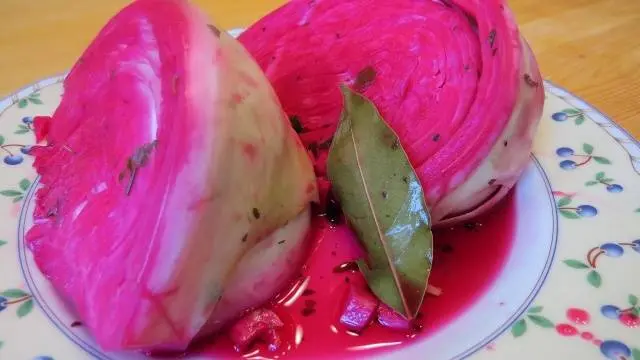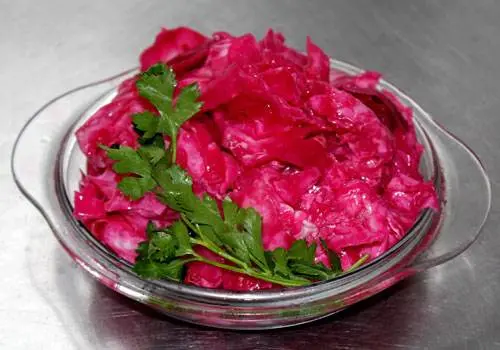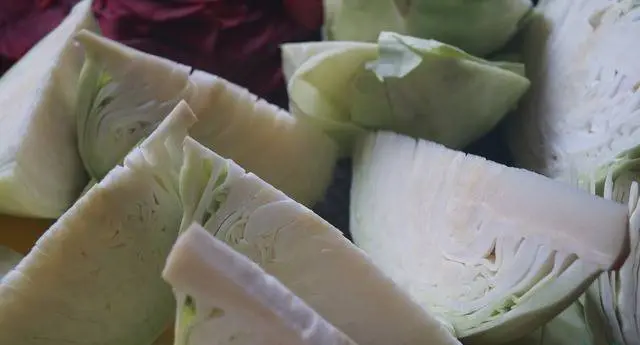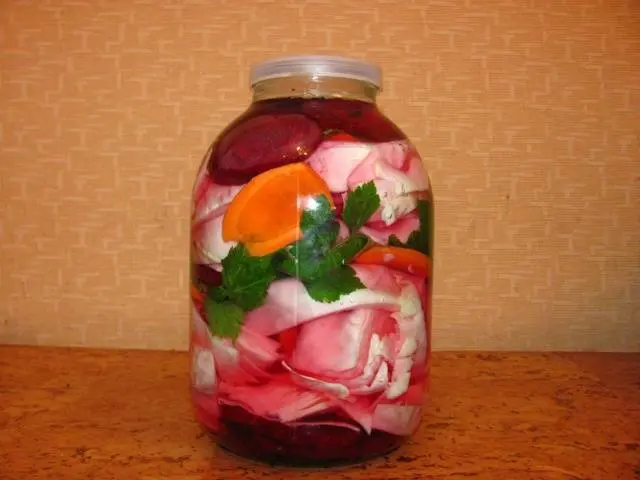Sauerkraut is loved all over the world, but it is especially popular in Slavic countries, where it is one of the most traditional snacks. This is primarily due to the fact that in countries with a relatively cold climate there are not many dishes that could boast a rich content of vitamin C in the winter. And the lack of this vitamin in the old days led to truly disastrous consequences for many people. In cabbage, sauerkraut according to old recipes, without the addition of vinegar, not only all vitamins and nutrients are preserved, but also multiplied due to the naturally occurring fermentation process. But it is interesting that in other countries sauerkraut has been known since antiquity and among the recipes that have survived to this day, Georgian sauerkraut with beets is very popular.

It is distinguished, first of all, by its color and juiciness, thanks to which this dish may well decorate any festive table, not to mention the everyday meal. But the taste of this sauerkraut is also very peculiar and will come in handy to diversify the usual unleavened dishes of the winter table.
Traditional recipe
Among the many existing options for making cabbage, the classic recipe stands out, which does not include the addition of vinegar, and cabbage fermentation occurs naturally. In the simplest version, you will need the following components:
- White cabbage – 2-3 kg;
- Raw beets – 1,5 kg;
- Celery – several bunches of greens, weighing about 150 grams;
- cilantro – 100 grams;
- Garlic – 2 heads of medium size;
- Hot red pepper – 2-3 pods;
- Salt – 90 grams;
- Water – 2-3 liters.

Cabbage heads are cleaned from external contaminated and old leaves. Then each head of cabbage is cut into several parts, the roughest part of the stalk inside is cut out.
Beets are freed from the peel and cut into thin slices. The garlic is peeled to white cloves. Each slice is cut into at least two parts.
Hot pepper is washed under cold water, cut in half. All internal seed chambers are cleaned from it, and it is washed again with running water, after which it is cut into circles.
Celery and cilantro are cleaned of possible contaminants and chopped rather finely.

Now it’s time to start preparing the brine. The exact amount of brine is determined empirically. It should be enough so that the cabbage with vegetables placed in the pan is completely covered with it.
In the simplest recipe, about 1 grams of salt is taken per 40 liter of water. Water is brought to a boil, then salt dissolves in it and everything cools. When using spices, they are added after boiling water, and the water with them is heated for another 5 minutes.
It is best to ferment cabbage according to this recipe in a large enameled saucepan, using a press on top. Beets are laid out at the very bottom, then a layer of cabbage, again a layer of beets, and so on. Somewhere in the middle, cabbage must be sprinkled with a layer of chopped herbs and garlic with hot peppers. At the very top, there must be a layer of beets – this will serve as a guarantee of uniform coloring of the cabbage in a beautiful crimson color.

After laying out all the vegetables and herbs, they are poured with cold brine, and a plate with oppression is placed on top, in the role of which a large jar filled with water can serve.
Place the container with cabbage under oppression in a warm place with a temperature of about + 20 ° + 22 ° C, where direct sunlight does not fall.
Every day after the appearance of foam, it is necessary to pierce the contents of the pan with a sharp fork or knife so that gases come out of the cabbage. When the foam stops appearing, and the brine becomes transparent, Georgian-style sauerkraut is ready. It can be transferred to jars with nylon lids and stored in the refrigerator.

Multi-ingredient recipe
The next option is specially designed for lovers of experiments. Cabbage sauerkraut according to this recipe has more right to be called pickled, since the sourdough comes with the addition of vinegar, but this allows you to cook it very quickly. The whole process can take as little as 12 hours, although more often it is left for 24 hours.
The composition of the ingredients in the recipe is very diverse, but you can experiment, focusing on your taste and adding or removing any components. Only the presence of cabbage and beets is important. So, you are preparing:
- White cabbage – about 2 kg;
- Beets – 600 grams;
- Carrots – 300 grams;
- Onion – 200 grams (add as desired);
- Hot pepper – 1 pod;
- Garlic – 1 head;
- Greens (cilantro, parsley, dill, celery) – only about 200 grams;
- Peppercorns – 6-7 pieces.

All vegetables are peeled and cut into pieces:
- beets and carrots – straws;
- onions – half rings;
- cabbage – rectangular bars;
- garlic – small cubes;
- hot pepper – in circles.
Herbs are finely chopped with a knife. All vegetables and herbs are mixed in a large bowl and then placed in a large glass jar.

At the same time, salt with sugar, black pepper and vinegar are added to boiling water. Vegetables in a jar are poured with boiling marinade and covered with a lid on top. After cooling after 12 hours, sauerkraut can already be tasted.
Cabbage prepared according to this recipe is usually stored in a cool place, but as experience shows, it does not stale for a long time. Therefore, for the winter it is better to make it in larger quantities.









